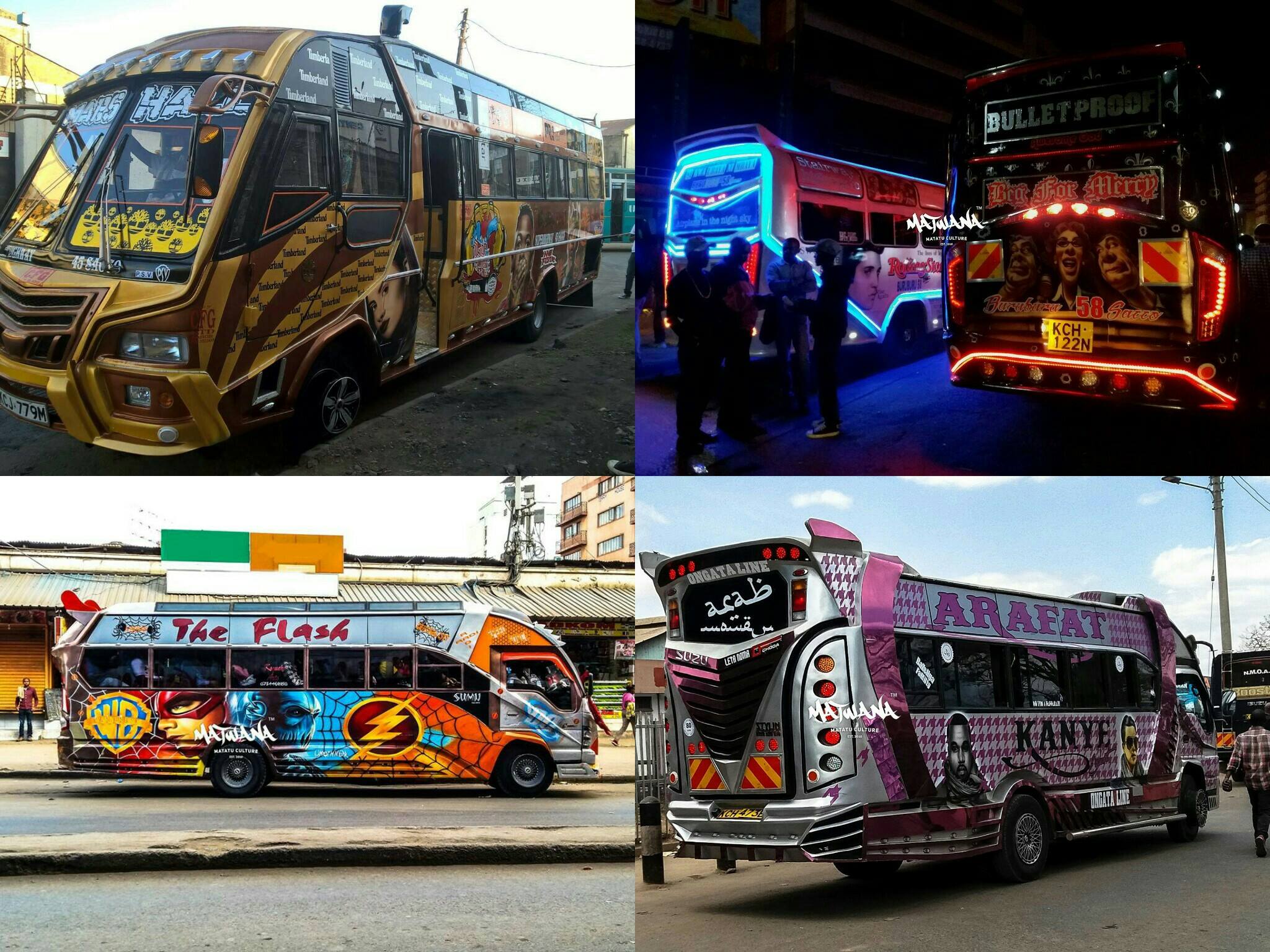Matatus is the preferred mode of public transportation in Kenya, known for its vibrant designs that set it apart from ordinary city buses. In this article, we’ll explore their origins and get into what makes them unique compared to public transport systems in other countries.
These minibusses are privately owned and come in different sizes, carrying anywhere from 14 to 33 passengers. They’re like moving clubs, with loud music and custom designs.
Unfortunately, matatus have had a reputation for reckless driving and sometimes the conductors, called makangas, have been known for being universally rude. But things have gotten better lately. Despite their past troubles, matatus are still seen as unique works of art.
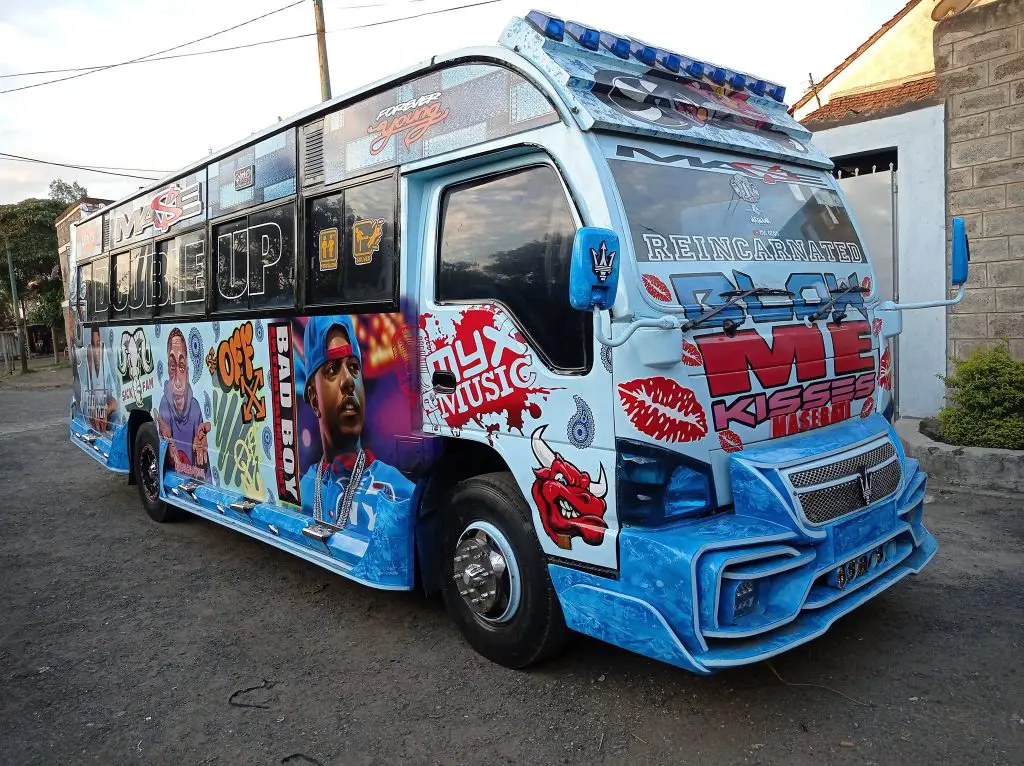
The History of Matatus

The name ‘Matatu’ comes from the local Kikuyu language, where it originally meant ‘thirty cents,’ which was the fare they charged in the past.
Initially, they were called ‘pirate taxis’ and were seen as illegal because only the Kenya Bus Company had permission to provide public transport.
But in 1973, President Jomo Kenyatta allowed them to operate legally without special licenses. They just had to follow the insurance and traffic rules. This happened because matatu operators lobbied hard for it.
By the 1990s, the matatu business was booming, and it became known as ‘Matatu culture.’ They were known for their colorful graffiti, loud music, fast driving, and using slang language called ‘sheng.’
In Nairobi alone, there were around 30,000 registered matatus by 2017 a jump from the 400 back in the 70s.
What is Matatu Culture?
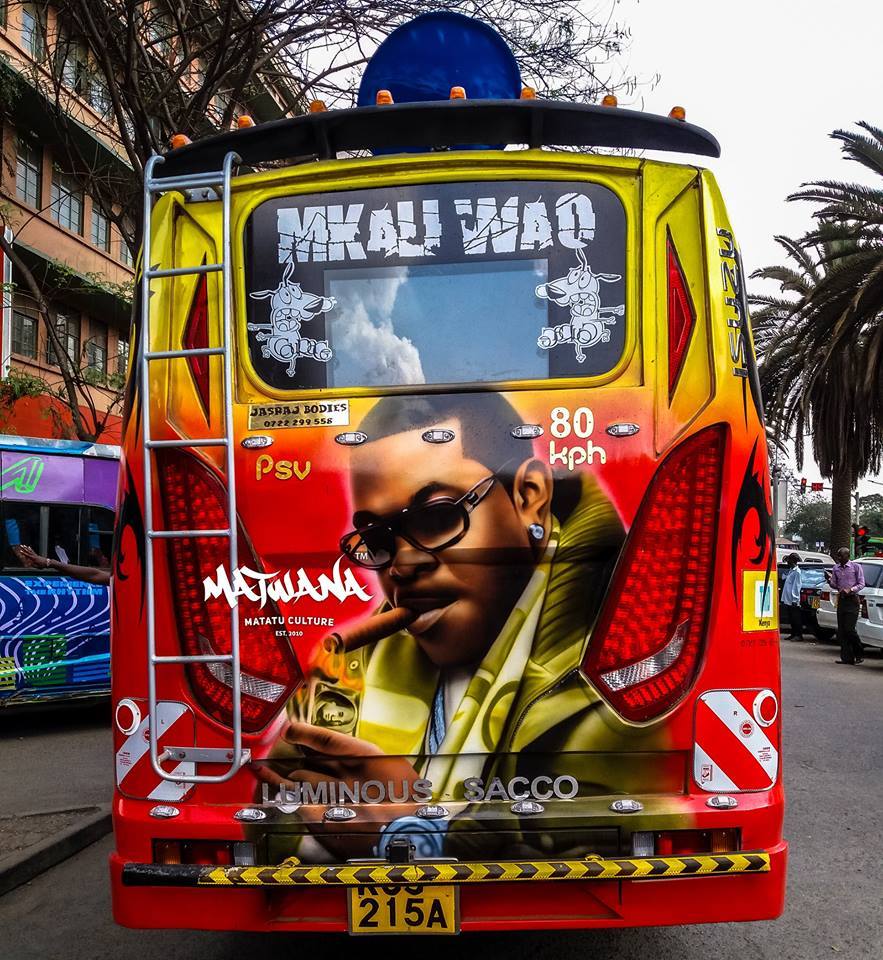
Matatu culture surrounds a variety of expressions, whether through symbolic gestures, or spoken language (slang), that are employed within or connected to matatus (public minibuses) and involve the interaction between passengers, workers, and the vehicle itself.
The culture evolved from the initial illegality of matatus operating without proper authorization, which contributed to a sense of rogue behavior and impunity among operators. Over time, these characteristics became central defining elements of Matatu Culture.
The culture covers all aspects of using and running matatus, which have become common and familiar to everyone involved: the drivers, passengers, other drivers on the road, and even the government and regulatory bodies.
This includes the decoration of matatus with graffiti artwork featuring hip-hop artists, global celebrities, sports figures, political figures, and religious symbols.
While the decoration and pimping of the vehicles are not the only aspects of matatu culture, it is the most impressive and stand-out feature that is unique and appreciated globally.
Significant resources are dedicated to realizing these artistic expressions, and while it can be costly for matatu owners, many consider it a valuable investment despite the monetary burden.
Why Matatus Are Flashy and Loud
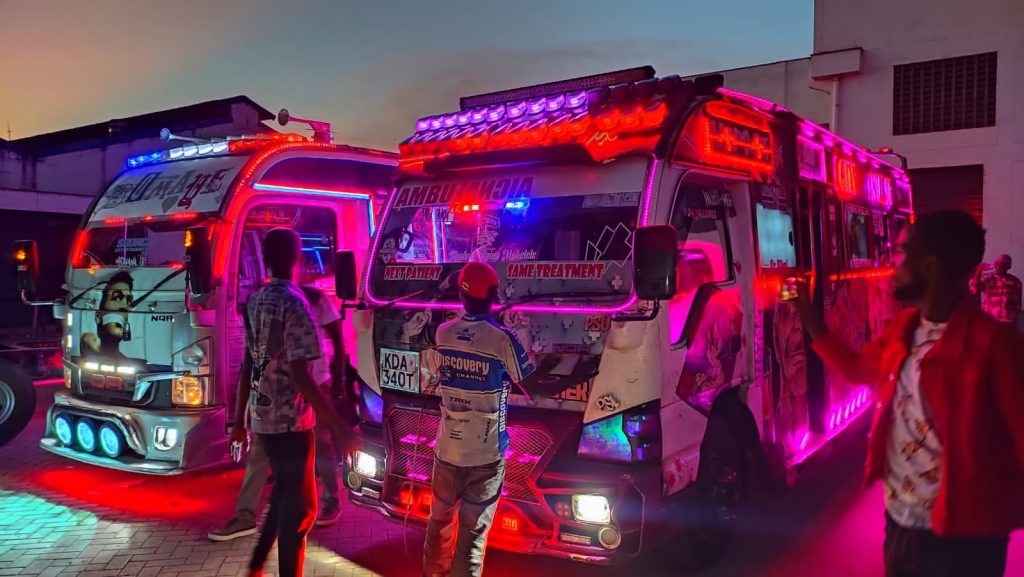
To stay ahead of the competition and draw passengers, matatu owners must invest heavily to ensure their minibusses are of top quality. They have put significant resources into enhancing the aesthetics of their vehicles, primarily to establish a distinctive identity and project an image of being tough and competitive in the industry.
They often decorate their minibusses with disco lights to make them stand out and enhance their appearance, aiming to attract the interest of younger passengers. These better-designed vehicles can command fares up to two times higher than ordinary ones.
How Matatus are Modified
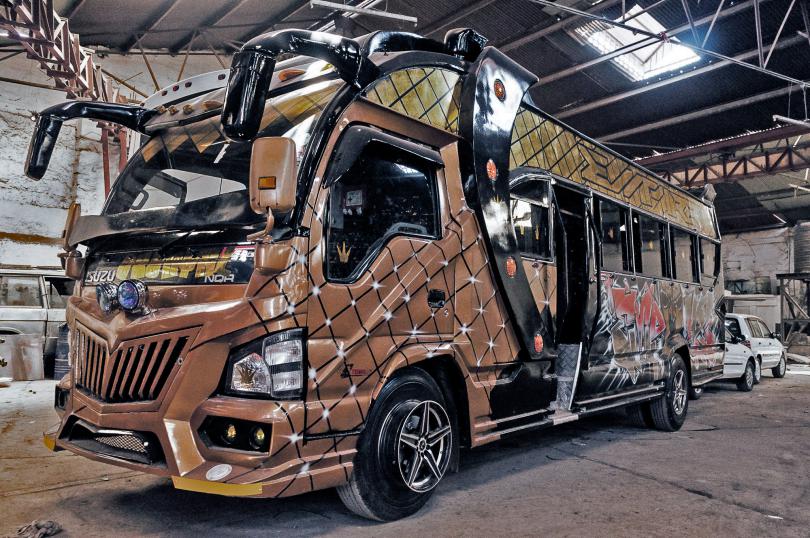
Matatus are typically constructed from scratch using the chassis of a new truck, which is stripped down. Fabricators then assemble the framework and attach the necessary panels.
Once this basic structure is completed, matatu artists take over, adding vibrant graffiti, hand-painted portraits, and eye-catching designs. Additionally, interior fittings such as seats and sound systems are installed.
The term “Manyanga” refers to a modified matatu designed to be visually appealing, often likened to a beautiful girl.
The Future Of Matatu Culture
The future of Matatu Culture remains uncertain, but it’s clear that it’s here to stay, whether embraced or criticized.
The government once prohibited matatu art and loud music due to safety concerns, although the ban was lifted in 2015. Matatu culture cultivates a strong sense of community, and relatability and adds a distinct flair to our transportation system.
These vehicles are more than just modes of transit; they’re symbols of artistic expression.
Links
Why do Nairobians Queue For Super Metro Buses?
Bolt vs Uber in Kenya; Which App Should You Use?

